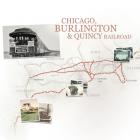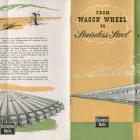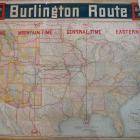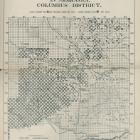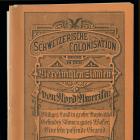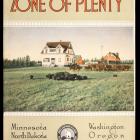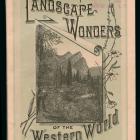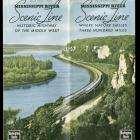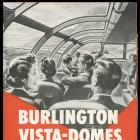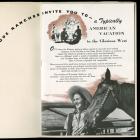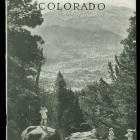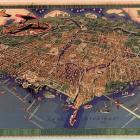The Pacific Northwest: “Most people are captivated and captured on their first trip”
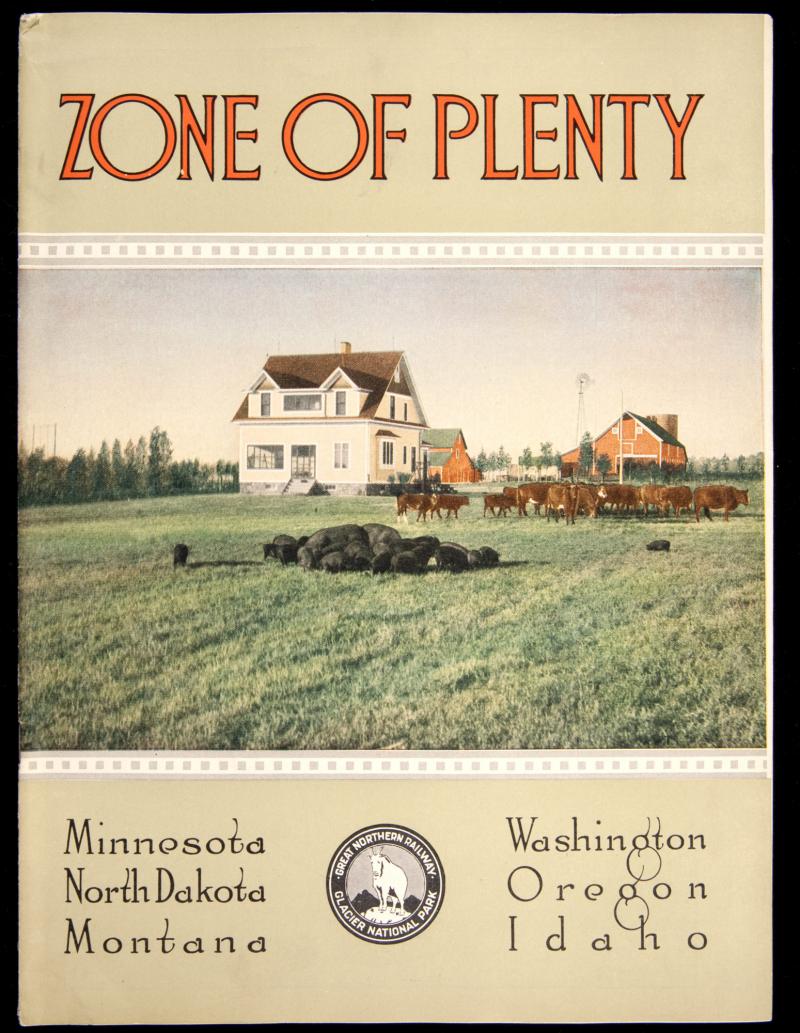
A 1920 brochure on the “zone of plenty” along the Burlington Route.
A 1920 brochure on the “zone of plenty” along the Burlington Route.
Courtesy of Newberry Library. CB&Q Misc. Bx. #4.
Used with permission of the Newberry Library. With questions about reuse of this image, contact the Newberry Library.
The copyright holder reserves, or holds for their own use, all the rights provided by copyright law, such as distribution, performance, and creation of derivative works.
James J. Hill’s Great Northern Railway was the only successful transcontinental road to be built without land grants. Hill acquired controlling stock in the CB&Q in 1901, in effect making the Burlington a transcontinental route. Between 1923 and 1924 a series of finely produced booster pamphlets was published jointly by the Chicago, Burlington & Quincy Railroad, the Northern Pacific Railway, and the Great Northern Railway. This selection of covers from the brochures suggest a coherent vision of the Pacific Northwest as a forward-looking frontier, full of mineral wealth, a gateway to international trade, yet a home for humble tillers of the soil and raisers of chickens. They draw on archetypes of yeoman farmers, inexhaustible resources, and dramatic landscapes to portray a benignly optimistic vision of Manifest Destiny.
This brochure defines the “Zone of Plenty” as the northern tier of states from Minnesota to Washington and Oregon, Hill’s original railway empire. Fat hogs and cattle grazing in lush grass in front of a well-ordered new house, a barn, a windmill, and outbuildings adorn the cover. No grains or vegetables are depicted.
This busy scene below depicts a cornucopia of economic activity, with grain and livestock in the foreground, a man carrying a basket of produce, and in the background tall timber ready for the mill, and a factory across the water. Smoke may symbolize progress, and the ship distant markets for both timber and produce.
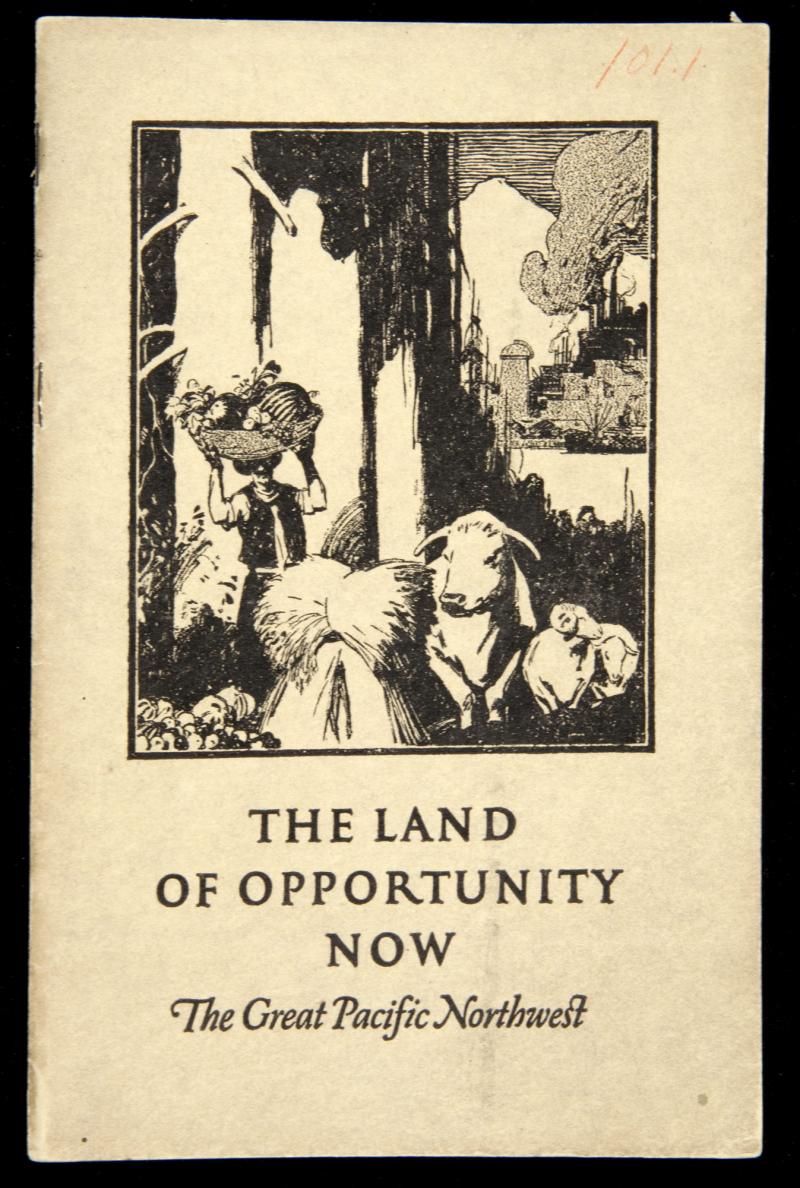
Cover, CB&Q “Land of Opportunity Now” brochure, 1923.
Cover, CB&Q “Land of Opportunity Now” brochure, 1923.
Courtesy of Newberry Library Chicago. CB&Q Misc. Bx. #4.
Used with permission of the Newberry Library. With questions about reuse of this image, contact the Newberry Library.
The copyright holder reserves, or holds for their own use, all the rights provided by copyright law, such as distribution, performance, and creation of derivative works.
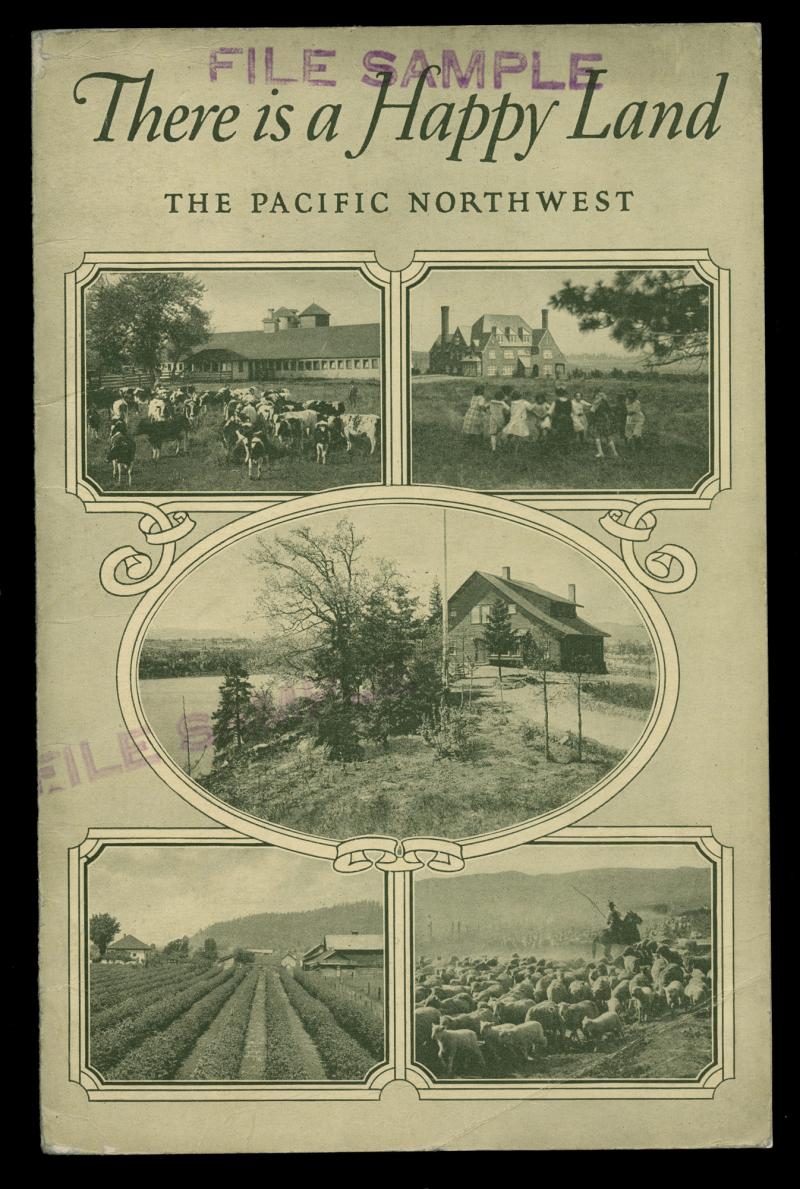
Cover, CB&Q “There is a Happy Land: The Pacific Northwest” brochure, 1923.
Cover, CB&Q “There is a Happy Land: The Pacific Northwest” brochure, 1923.
Courtesy of Newberry Library Chicago. CB&Q Misc. Bx. #4.
Used with permission of the Newberry Library. With questions about reuse of this image, contact the Newberry Library.
The copyright holder reserves, or holds for their own use, all the rights provided by copyright law, such as distribution, performance, and creation of derivative works.
This cover above displays vignettes of order. In the center is a large, sturdy, modern home scenically situated on an overlook. Clockwise from upper left: a healthy herd of cattle in front of a modern barn; schoolgirls dancing in front of a new schoolhouse; a horseman herding sheep; and weed-free rows of vibrant crops.
In this domestic scene below, a happy couple oversees the key to their prosperity: chickens. It is an image of agrarian bliss that contrasts sharply with Grant Woods’s famously dour painting seven years later, “American Gothic” (1930).
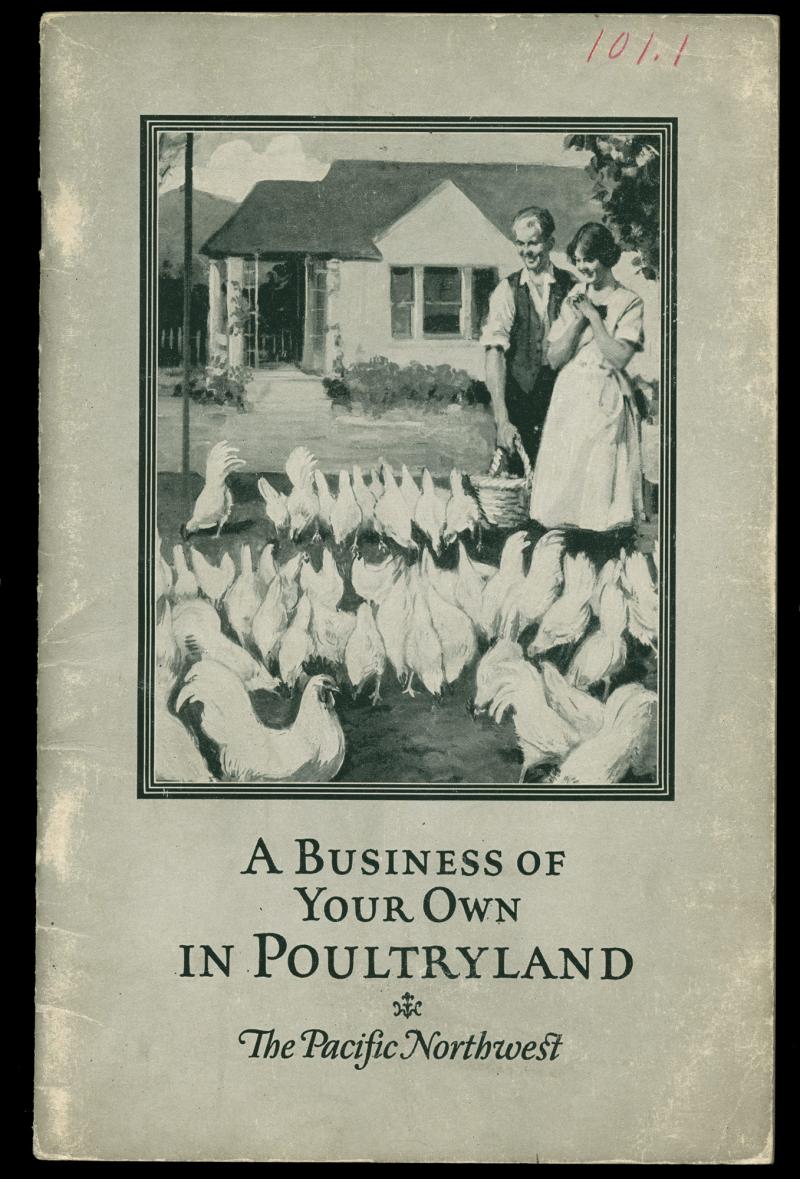
Cover, CB&Q brochure, “A Business of Your Own in Poultryland: The Pacific Northwest,” 1923.
Cover, CB&Q brochure, “A Business of Your Own in Poultryland: The Pacific Northwest,” 1923.
Courtesy of Newberry Library Chicago. CB&Q Misc. Bx. #4.
Used with permission of the Newberry Library. With questions about reuse of this image, contact the Newberry Library.
The copyright holder reserves, or holds for their own use, all the rights provided by copyright law, such as distribution, performance, and creation of derivative works.
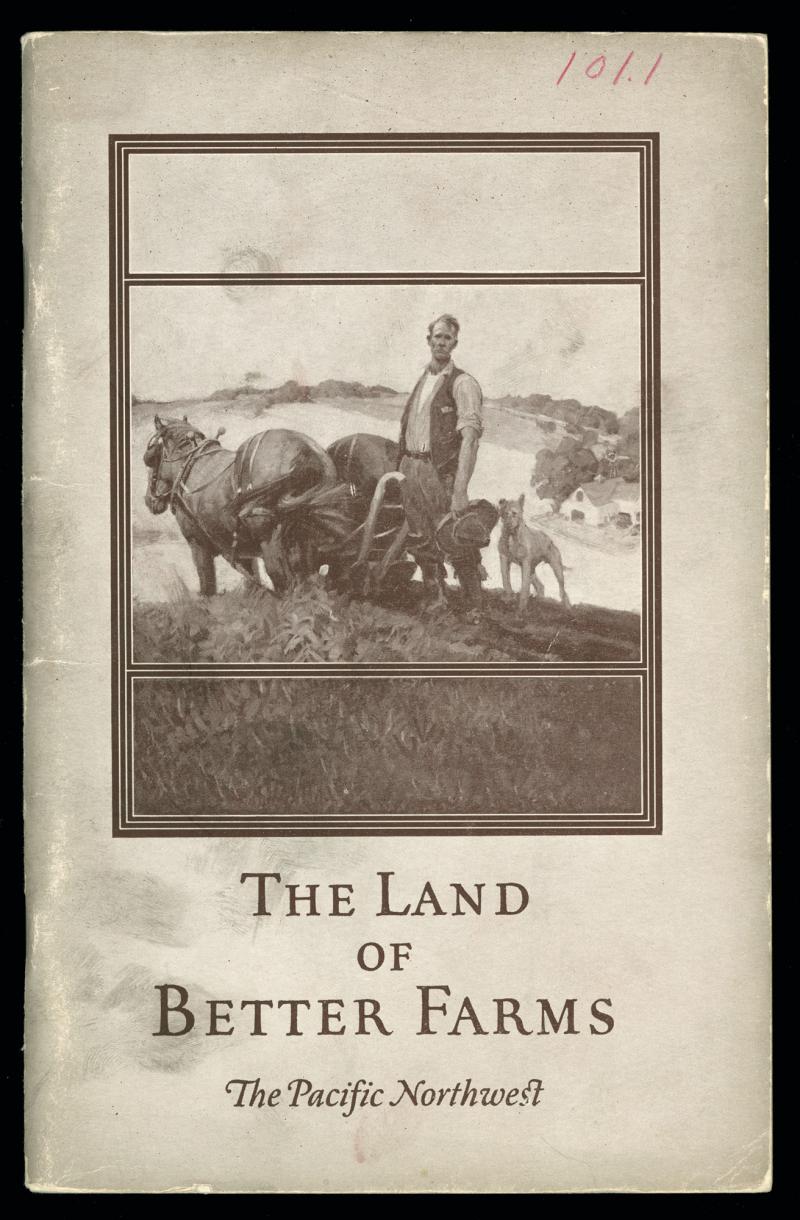
Cover of a CB&Q brochure on small-scale farming, n.d.
Cover of a CB&Q brochure on small-scale farming, n.d.
Courtesy of Newberry Library. CB&Q Misc. Bx. #4.
Used with permission of the Newberry Library. With questions about reuse of this image, contact the Newberry Library.
The copyright holder reserves, or holds for their own use, all the rights provided by copyright law, such as distribution, performance, and creation of derivative works.
While the covers of other pamphlets depict modern farms, this scene above shows a stern-looking yeoman behind a horse-drawn plow breaking virgin soil on a hilly field above his house. It may have been aimed at would-be settlers who wanted to escape from more urban and industrialized parts of the country to experience the Jeffersonian ideal of being a small-farmer land owner dependent only on his wits and labor.
After lumber companies moved through the northern forests of Michigan, Wisconsin, and Minnesota, they left the cutover lands and moved to the Pacific Northwest. The scene below suggests abundant jobs for hardworking men.
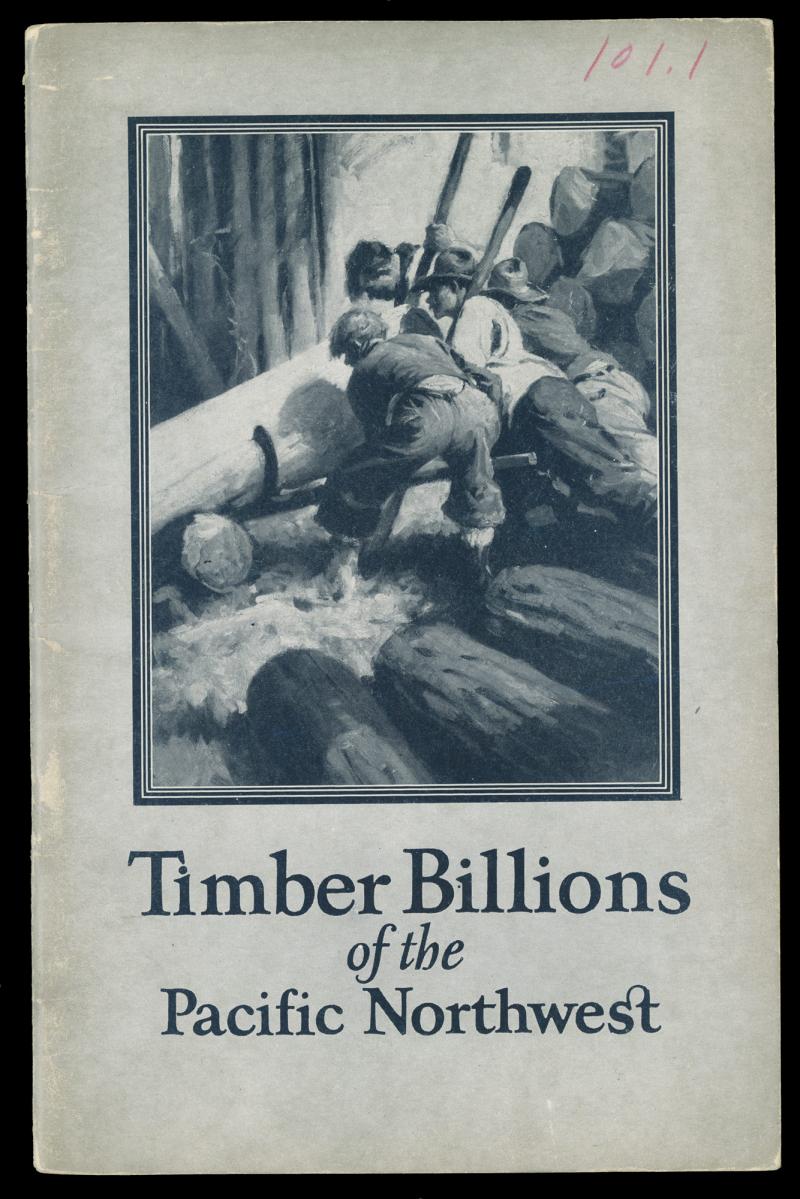
Cover, CB&Q “Timber Billions of the Pacific Northwest” brochure, 1923
Cover, CB&Q “Timber Billions of the Pacific Northwest” brochure, 1923
Courtesy of Newberry Library Chicago. CB&Q Misc. Bx. #4.
Used with permission of the Newberry Library. With questions about reuse of this image, contact the Newberry Library.
The copyright holder reserves, or holds for their own use, all the rights provided by copyright law, such as distribution, performance, and creation of derivative works.
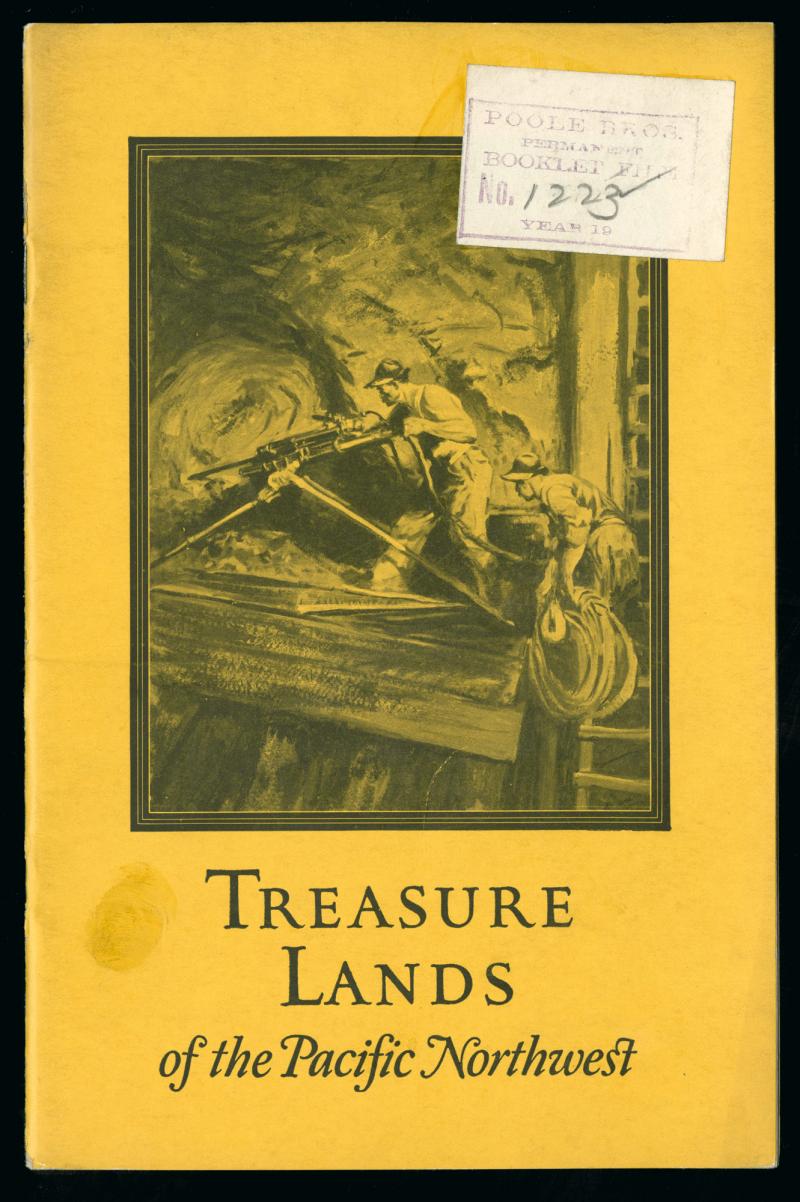
Cover, CB&Q “Treasure Lands of the Pacific Northwest” brochure, 1924.
Cover, CB&Q “Treasure Lands of the Pacific Northwest” brochure, 1924.
Courtesy of Newberry Library Chicago. CB&Q Misc. Bx. #4.
Used with permission of the Newberry Library. With questions about reuse of this image, contact the Newberry Library.
The copyright holder reserves, or holds for their own use, all the rights provided by copyright law, such as distribution, performance, and creation of derivative works.
The text inside the above brochure begins: “on the basis of wealth of immeasurable billions in mineral treasure a mighty industrial edifice is rising in the Pacific Northwest. To picture this vast wealth, to measure its power and to explain what it means to the man, in whatever line of business, who builds his future in this Land of Opportunity is the purpose of this book.” The brochure goes on the describe the treasure to be unearthed, not merely gold and silver, but even more valuable mines of copper, lead, coal, oil, and zinc to help supply a growing demand: “An electrified nation demands more copper.”
With pictures, maps, and persuasive rhetoric, this brochure below essentially argues that cheap power is the key to industrial growth and the “Great Builder” bestowed upon the Pacific Northwest more than half of the water power resources of the country. In a remarkable section titled “The Immortal Horses” it argues that “coal is burned and destroyed” and its “supplies … are slowly but inevitably diminishing; they are not inexhaustible”; and oil reserves “too will one day dry up; for neither are oil supplies unlimited”; and as for wood, “vast forests, once thought inexhaustible, are rapidly depleting” suggesting that “as a source of economic industrial power it cannot be relied upon. But for the horses of water power the future holds no threat of extinction.”
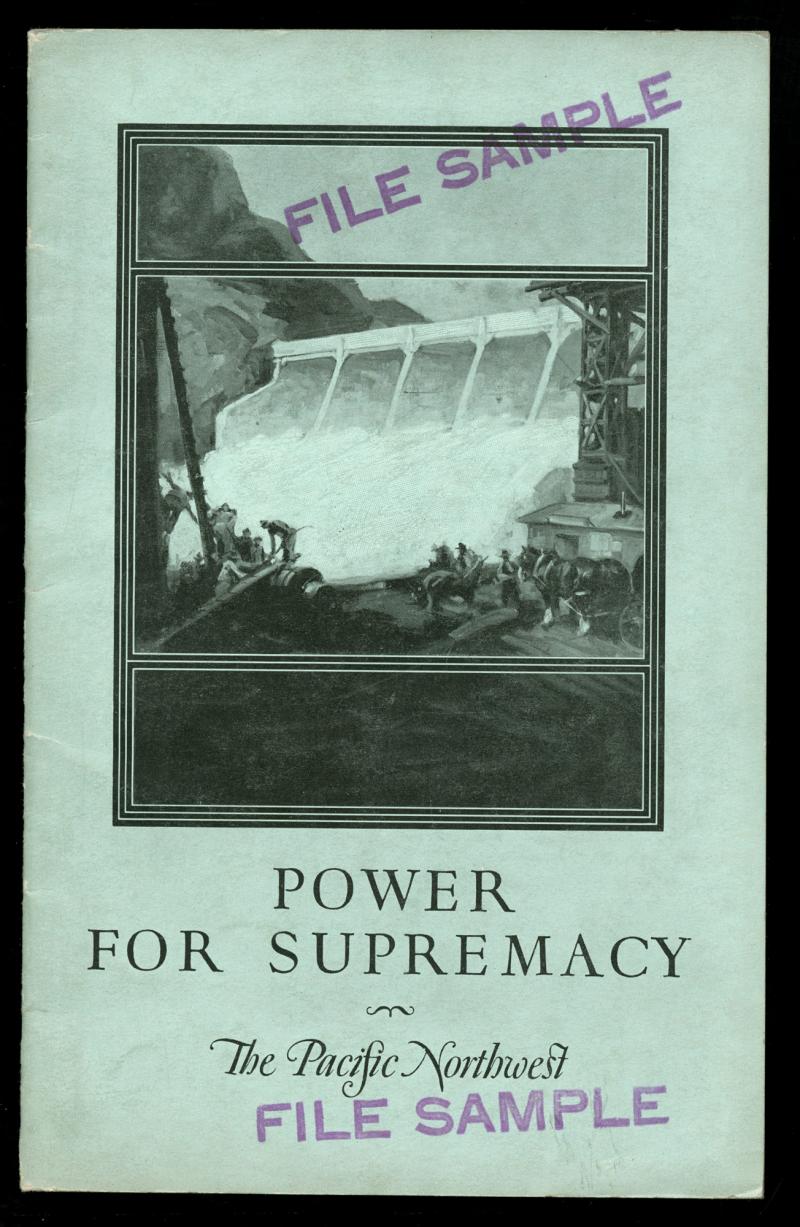
Cover, CB&Q “Power for Supremacy” brochure, 1923.
Cover, CB&Q “Power for Supremacy” brochure, 1923.
Courtesy of Newberry Library Chicago. CB&Q Misc. Bx. #4.
Used with permission of the Newberry Library. With questions about reuse of this image, contact the Newberry Library.
The copyright holder reserves, or holds for their own use, all the rights provided by copyright law, such as distribution, performance, and creation of derivative works.
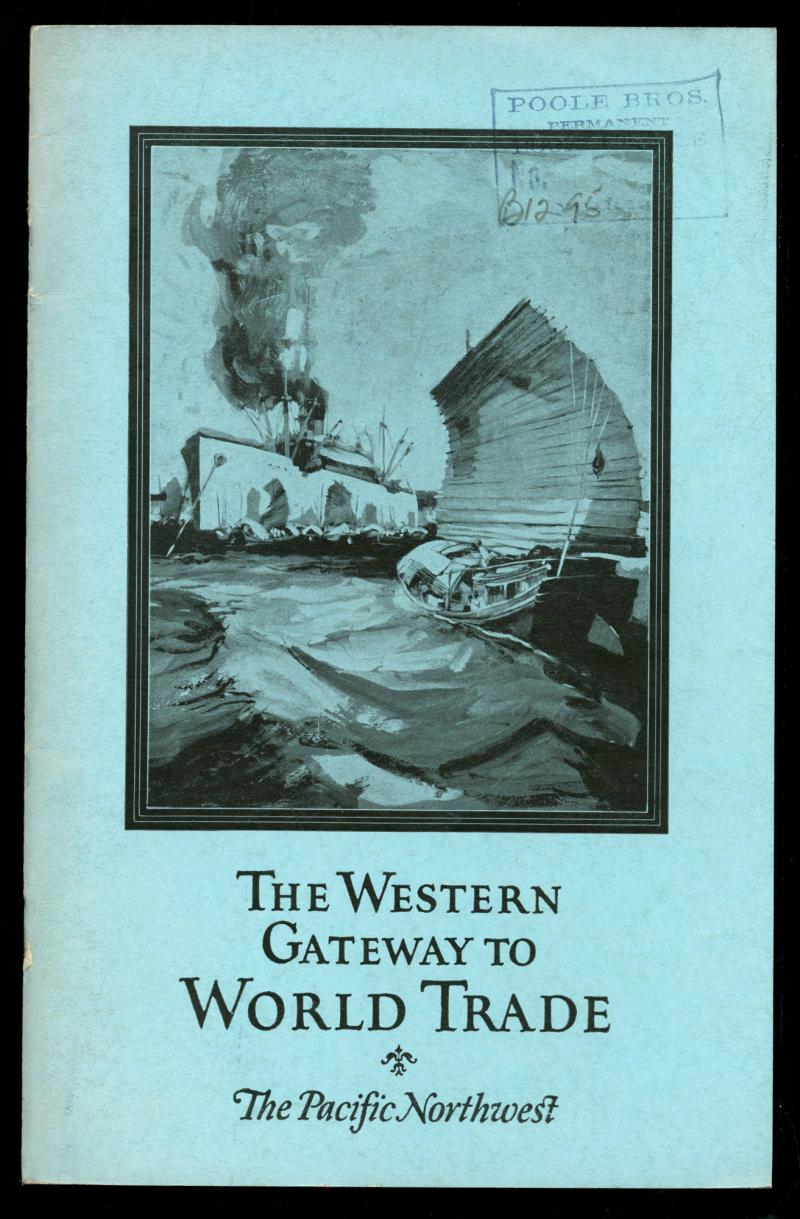
Cover, CB&Q “Western Gateway to World Trade” brochure, 1923.
Cover, CB&Q “Western Gateway to World Trade” brochure, 1923.
Courtesy of Newberry Library Chicago. CB&Q Misc. Bx. #4.
Used with permission of the Newberry Library. With questions about reuse of this image, contact the Newberry Library.
The copyright holder reserves, or holds for their own use, all the rights provided by copyright law, such as distribution, performance, and creation of derivative works.
The above brochure begins dramatically; you can almost see the increasing brightness: “it is morning in the Pacific. The nations of its far-flung countries, feeling the strength of rapid growth, arise in new might. Ancient empires, potentially the most powerful of the earth, throw off the sleep of lethargy. The powers gird for fresh conquests of trade. Twelve hundred millions of people, the world’s great majority—white, yellow, brown, black—look out upon the broad Pacific and behold a vast new realm of commerce, a new theatre of world events.” Maps and figures help build the case for the important role the Pacific Northwest is destined to play on the dawning new world stage.

CB&Q Brochure: “Through the American Wonderland: The Pacific Northwest,” 1923.
CB&Q Brochure: “Through the American Wonderland: The Pacific Northwest,” 1923.
Courtesy of Newberry Library. CB&Q Misc. Bx. #2.
Used with permission of the Newberry Library. With questions about reuse of this image, contact the Newberry Library.
The copyright holder reserves, or holds for their own use, all the rights provided by copyright law, such as distribution, performance, and creation of derivative works.
The opening passage of this brochure argues that not only landscapes were transformed, but so too were the adventurous people who traveled the rails to destinations like the Pacific Northwest and beyond: “this, then, is about a trip that may change your whole life.” Whether seeking a new home or merely a temporary escape, a ticket on the Burlington offered not only transportation from point A to point B, but an opportunity for travelers to reinvent themselves in a new place.



